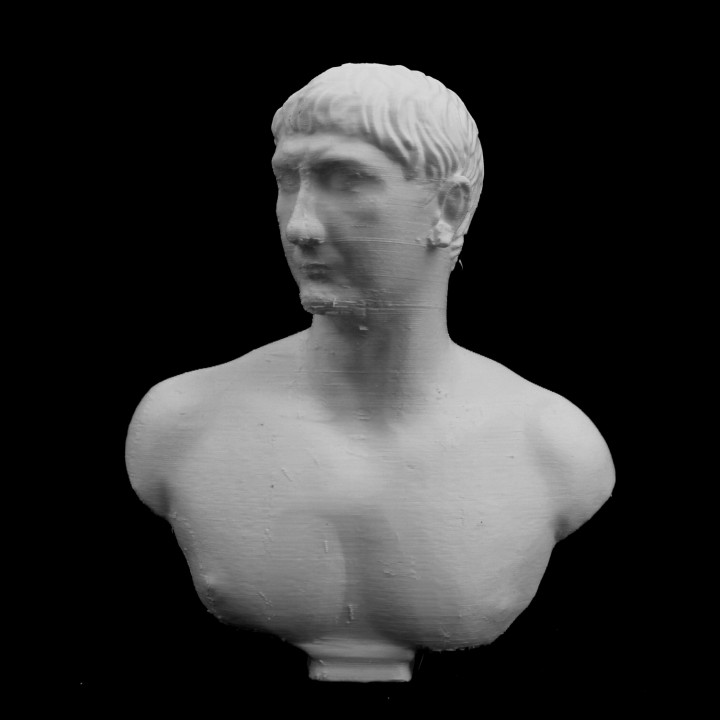
Marble Portrait of the emperor Trajan at The British Museum, London
myminifactory
Trajan ruled as Roman emperor from 98 AD until his death. Declared optimus princeps ("the best ruler") by the Senate, he is remembered for leading the empire's greatest military expansion in history, resulting in its maximum territorial extent by the time of his passing. He also implemented philanthropic policies, overseeing extensive public building programs and social welfare initiatives that earned him a reputation as one of the Five Good Emperors who oversaw an era of peace and prosperity in the Mediterranean world. Born into a non-patrician family of Italian origin in Italica, Spain, Trajan rose to prominence during Domitian's reign. As a legatus legionis in Hispania Tarraconensis, he supported Domitian against a revolt on the Rhine led by Antonius Saturninus in 89. In September 96, Domitian was succeeded by Nerva, an old and childless senator who proved unpopular with the army. After a tumultuous year, a revolt by the Praetorian Guard compelled him to adopt Trajan as his heir and successor. Nerva died on January 27, 98, and was succeeded without incident. As a civilian administrator, Trajan is known for his extensive public building program that reshaped Rome and left enduring landmarks like Trajan's Forum, Trajan's Market, and Trajan's Column. Early in his reign, he annexed the Nabataean kingdom, creating Arabia Petraea. His conquest of Dacia enriched the empire greatly with valuable gold mines. However, the new province's exposed position made it susceptible to attack on three sides, and it was later abandoned by Emperor Aurelian. His war against the Parthian Empire ended with the sack of Ctesiphon and the annexation of Armenia and Mesopotamia. His campaigns expanded the Roman Empire to its greatest territorial extent. In late 117, while sailing back to Rome, Trajan fell ill and died of a stroke in Selinus. He was deified by the Senate and his ashes were laid to rest under Trajan's Column. Hadrian succeeded him as emperor. This object is part of Scan The World, a non-profit initiative introduced by MyMiniFactory through which we are creating a digital archive of fully 3D printable sculptures, artworks, and landmarks from across the globe for public access. Scan The World is an open-source community effort; if you have interesting items around you and would like to contribute, email stw@myminifactory.com to find out how you can help.
With this file you will be able to print Marble Portrait of the emperor Trajan at The British Museum, London with your 3D printer. Click on the button and save the file on your computer to work, edit or customize your design. You can also find more 3D designs for printers on Marble Portrait of the emperor Trajan at The British Museum, London.
